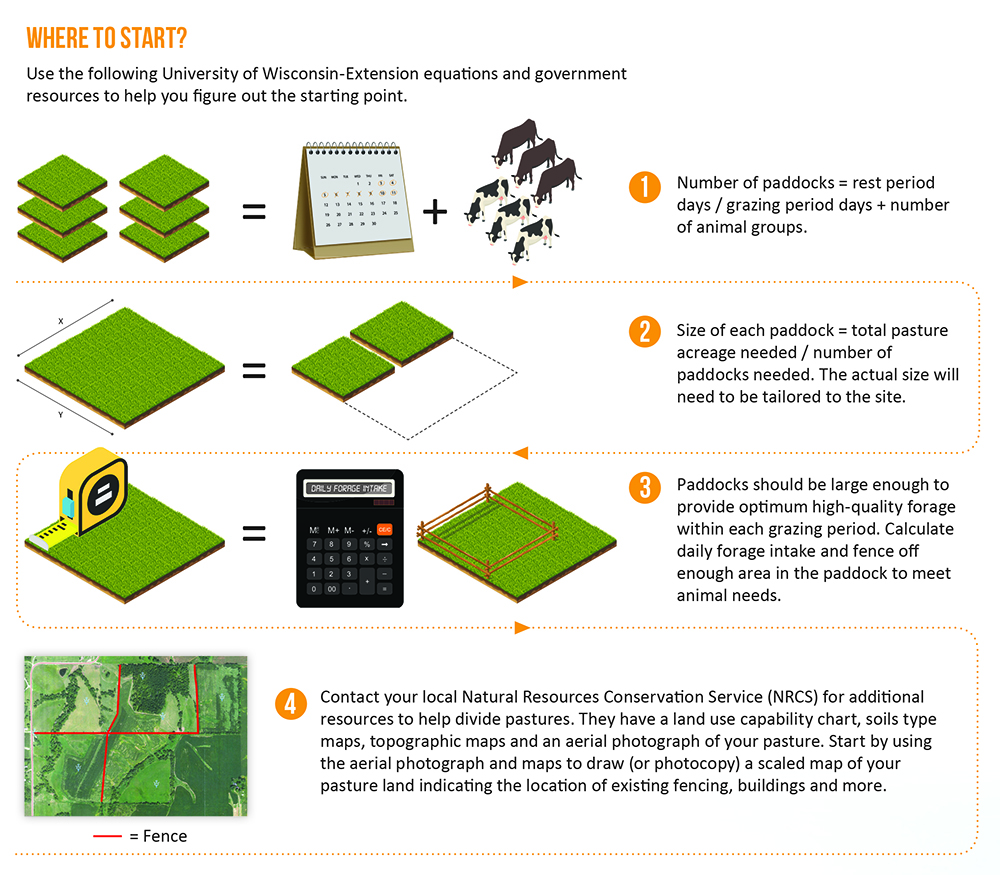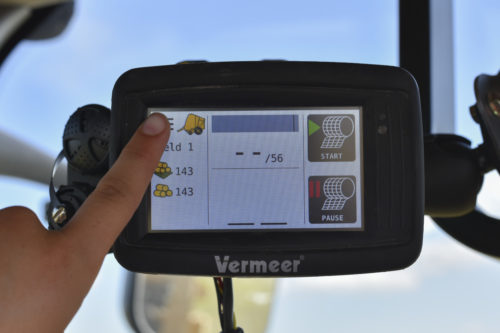
Chew on This: Rotational Grazing Brings Benefits
June 2017
Owning and utilizing quality pasture takes careful planning, but too often field management falls to the bottom of a farmer’s endless to-do list. To some, it might seem like it requires very little effort to keep grazing fields sustainable, but it takes more than the sun and rain to keep fields productive. That is why more and more producers are adopting rotational grazing practices.
WHY ROTATIONAL GRAZING?
According to research by the University of Wisconsin-Extension, over 25 percent of the Midwest’s ag land is in some form of pasture and 80 percent of that land suffers from poor, uneven fertility with weed and erosion problems.1 To combat these issues, many farmers are adopting rotational grazing. This method divides fields into smaller paddocks (or gated sections) allowing grass to have resting periods when cattle are moved into a new paddock. The main point of this practice is to put the producer in control of what livestock consume. Anyone with livestock and grazing land can benefit from this system.

In a typical cow-calf operation, forages account for more than 80 percent of the annual feed requirement, but allowing herds to continuously graze one spot can result in lower yields and poor nutrition when grasses are not given enough time to grow.2 Poor management can turn a source of livestock feed into stripped land. Resting paddocks allow forage to renew energy reserves and deepen their root systems for long-term production and erosion prevention.
GIVE IT A TRY
Assuming you own the land, start-up and maintenance costs for rotational grazing can be less than confinement systems. The only capital cost specific to rotational grazing is fencing, but once paddocks can be established, rotational grazing may reduce several input costs including equipment, fertilizer, pesticides and labor costs. Because rotational grazing can be practiced in a variety of degrees, farmers can use anywhere from 2 to 30 or more paddocks depending on the size of their herd, desired level of management and acres available. A more intensive rotational system, for example, would use a larger selection of paddocks, shorter grazing periods and longer rest periods.
Many farmers are often reluctant to try the rotational method because they assume it will take more time to move livestock. However, the time required to move cattle is minimal if proper fencing designs are installed and the cattle have been moved a few times — an experienced rotational grazer can move 50 to 250 head of livestock in 15 minutes.1
To be successful, the timing of rotations must be adjusted to the growth stage of the forage within the field, not rigid time schedules. The University of Wisconsin-Extension research states: “For optimum production, pastures should be grazed about a week before the grass heads out (goes to seed) or when the legume is in the early or mid-bud stage.”1 The grass or legume chosen will greatly depend on climate and livestock preference.

RESOURCES TO PLAN PADDOCKS
There are several questions to consider before planning your rotational grazing paddocks and forage selections:
- How intensive do you want your management to be?
- Are you willing to feed supplemental grain or hay or do you want to avoid running out of forage?
- Do you want productive pastures right away or can you gradually work up to higher yields?
- How much capital is available to start a grazing system?
- What forage types are currently in the pastures?
- What is the condition of the pastures and fencing?
FIELD MANAGEMENT MATTERS
To produce good livestock feed from pasture, we must manage our pastures differently and rotational grazing has many advantages. Calculate your investment costs and look at the long-term benefits before deciding if it’s right for you. As with anything in farming, it’s a journey, not a destination.








